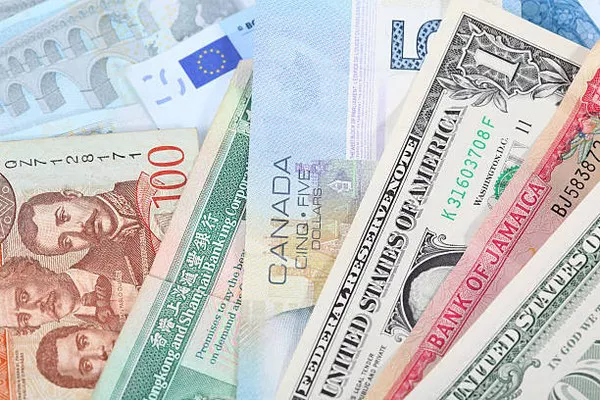When the Canadian dollar (CAD) strengthens against other currencies, it brings widespread effects across Canada’s economy, businesses, and everyday life. A strong loonie can influence trade, tourism, investments, and even government policies. Understanding these impacts is crucial for individuals, companies, and policymakers alike.
What Does a “Strong” Canadian Dollar Mean?
A “strong” Canadian dollar means that the CAD has appreciated relative to other currencies, such as the U.S. dollar (USD), the euro (EUR), or the Japanese yen (JPY). In simple terms, Canadians can buy more foreign goods and services for each dollar they spend. Exchange rates fluctuate due to various factors, including oil prices, interest rates, inflation expectations, and economic performance.
Economic Effects of a Strong Canadian Dollar
Impact on Exports
Canadian exporters generally face challenges when the dollar is strong. Goods and services become more expensive for international buyers, reducing Canada’s competitiveness abroad. Key export sectors like energy, forestry, agriculture, and manufacturing may experience lower demand.
Example:
A lumber company in British Columbia may find its products less attractive to U.S. buyers if the CAD rises significantly, resulting in fewer sales and potential job losses.
Impact on Imports
Conversely, a strong dollar makes importing cheaper. Canadian businesses can purchase foreign goods, materials, and technology at lower prices, potentially reducing production costs. Consumers also benefit from lower prices on imported products like electronics, clothing, and vehicles.
Example:
Retailers importing fashion brands from Europe might pay less when the loonie is strong, leading to discounts for Canadian shoppers.
Trade Balance Consequences
Canada’s trade balance may deteriorate when exports fall and imports rise. A persistent trade deficit (more imports than exports) could, over time, affect economic growth and lead policymakers to adjust monetary or fiscal policies.
How a Strong Canadian Dollar Affects Different Sectors
Tourism and Hospitality
A stronger CAD can discourage international tourists from visiting Canada, as their money buys less when exchanged. Meanwhile, Canadians are more likely to travel abroad, as foreign vacations become more affordable.
Result:
Domestic tourism sectors, such as hotels, airlines, and local attractions, may see reduced business from both foreigners and Canadians choosing to spend their money abroad.
Retail and Consumer Spending
Consumers benefit significantly when the Canadian dollar is strong. Imported goods become cheaper, meaning more affordable groceries, electronics, and cars. This increased purchasing power can drive up consumer confidence and retail sales, at least temporarily.
Note:
Retailers who depend heavily on Canadian-made products might feel pressured to compete with cheaper imports.
Real Estate and Investments
A strong loonie can influence real estate and investment flows. Foreign investors might find Canadian assets more expensive and less attractive, potentially cooling down real estate markets and foreign direct investments (FDI).
On the flip side, Canadian investors might take advantage of favorable exchange rates to invest more heavily in overseas markets, diversifying their portfolios.
Broader Implications of a Strong Canadian Dollar
Inflation Control
A strong Canadian dollar can help keep inflation in check. Cheaper imports lower the cost of goods, easing price pressures across the economy. This effect can be particularly welcome if inflation rates are rising.
However, too much downward pressure on inflation can be a concern, especially if it leads to deflation—a situation where prices fall broadly, potentially hurting economic growth.
Impact on Employment
Sectors like manufacturing, natural resources, and tourism often suffer when the dollar is strong, which can translate into job losses. If exports decrease significantly, companies may downsize to remain profitable.
At the same time, industries reliant on imports or international travel may benefit, offering new job opportunities.
Central Bank Policies
The Bank of Canada monitors currency strength closely. A strong dollar can influence interest rate decisions. If the economy slows due to reduced exports, the Bank might lower interest rates to stimulate growth.
Conversely, if the strong loonie leads to strong consumer spending and low inflation, there might be less urgency for intervention.
Factors That Strengthen the Canadian Dollar
Several factors typically cause the Canadian dollar to appreciate:
High Commodity Prices:
Canada is a major exporter of commodities like oil, natural gas, and minerals. Higher global commodity prices boost Canada’s trade revenues, strengthening the loonie.
Higher Interest Rates:
When Canadian interest rates are higher than those in other countries, foreign investors seek better returns by buying Canadian assets, driving up demand for CAD.
Strong Economic Performance:
A robust Canadian economy—reflected in strong GDP growth, low unemployment, and healthy corporate profits—attracts investment and boosts the dollar.
Weaker U.S. Dollar:
Often, a weakening U.S. dollar naturally strengthens the Canadian dollar by comparison, especially since the two currencies are closely linked.
Advantages and Disadvantages of a Strong Canadian Dollar
Advantages
Cheaper Imports:
Canadians pay less for imported goods and travel.
Lower Inflation:
A strong dollar helps keep domestic prices stable.
Stronger Consumer Confidence:
Consumers may feel wealthier and more willing to spend.
Greater International Investment Opportunities:
Canadians can invest abroad more affordably.
Disadvantages
Weaker Export Competitiveness:
Canadian goods and services become pricier for foreign buyers.
Strain on Tourism and Hospitality:
Fewer foreign visitors and more Canadians traveling abroad can hurt the sector.
Potential Job Losses:
Key export-dependent industries may cut jobs due to reduced demand.
Trade Deficits:
A shift toward more imports can harm Canada’s balance of trade.
Conclusion: A Double-Edged Sword
A strong Canadian dollar brings clear benefits and challenges. While consumers enjoy greater purchasing power and lower inflation, exporters and tourism-dependent businesses often face headwinds. Policymakers, investors, and businesses must closely watch currency movements and prepare for the ripple effects across the economy.
Ultimately, the health of the Canadian economy depends not just on the strength of the dollar, but on the ability to adapt to its changes. Whether strong or weak, the loonie’s movements are an integral part of Canada’s economic story.
You Might Be Interested In:
- Withdrawn Canadian Banknotes: A Look at Canada’s Changing Currency
- Benefits of Canada’s Plastic Currency: Things You Need To Know
- Cash or Card in Canada: Which Is the Best Way…


